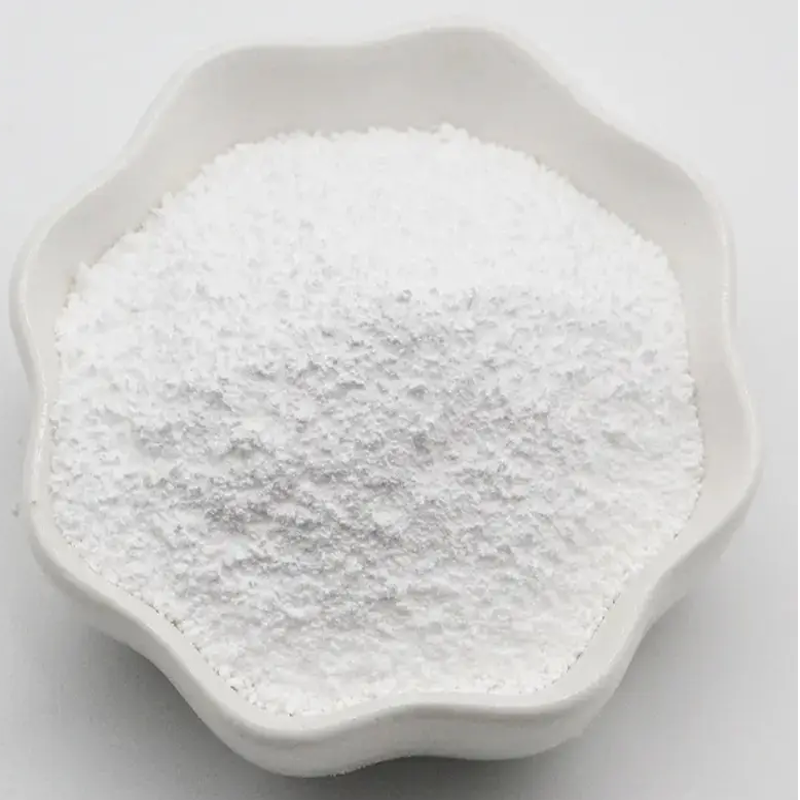-
Categories
-
Pharmaceutical Intermediates
-
Active Pharmaceutical Ingredients
-
Food Additives
- Industrial Coatings
- Agrochemicals
- Dyes and Pigments
- Surfactant
- Flavors and Fragrances
- Chemical Reagents
- Catalyst and Auxiliary
- Natural Products
- Inorganic Chemistry
-
Organic Chemistry
-
Biochemical Engineering
- Analytical Chemistry
- Cosmetic Ingredient
-
Pharmaceutical Intermediates
Promotion
ECHEMI Mall
Wholesale
Weekly Price
Exhibition
News
-
Trade Service
preface
Streptococcussuis (SS) is a gram-positive streptococcus that can cause porcine meningitis, sepsis, arthritis and endocarditis, and even acute death[1], and is also an important zoonotic protobacterium that can infect the human body through human wounds, respiratory tracts and other parts, causing human meningitis, sepsis, arthritis, endocarditis and endophthalmitis [2], which is characterized by insidious onset, rapid progression, critical illness, and high mortality rate [3].
The World Organisation for Animal Health (OIE) has classified swine streptococcal disease as a Class B disease, and China has listed it as a Class II animal disease, which is also one
Case after
The patient, male, 68 years old, on February 12, 2022, due to overwork operation, he developed waist swelling, fatigue, and edema of both lower limbs, came to the nephrology clinic of our hospital for treatment, and the outpatient blood routine showed hemoglobin 91 g/L, so he was admitted to the hematology department
Admission to the hospital: T: 36.
Laboratory tests: (1) Blood count: white blood cell count (WBC): 10.
Lumbar disc CT scan + three-dimensional: degenerative lumbar spine lesions, L2/3, L3/4, L4/5 and L5/S1 disc bulge
Hepatobiliary, spleen, pancreatic, and urinary ultrasound: increased hyperchondrical echo of both kidneys, prostatic hyperplasia, bilateral pleural effusion
The patient was admitted to the hospital for "fatigue, lumbar swelling and pain for 13 days, and hemoglobin abnormalities were found for 1 day", and was admitted to the hematology department for "myeloma? "After the diagnosis and treatment of blood diseases, fever appeared on February 15, 2022, and then bone puncture, blood culture, PCT, sputum culture, lung CT and other tests were successively improved
Case studies
Inspection case studies
Patient blood routine: WBC: 10.
Fig.
Fig.
Figure 3 Mass spectrometry identification results
After the correct and rational use of the drug sensitivity results provided by the laboratory department, the CRP results fell back rapidly, and the patients got a good treatment effect, and the hsCRP test results of the patients at different times were as shown
Fig.
Clinical case studies
Elderly male patients, because the "patient" due to "fatigue, waist swelling and pain for 13 days, found hemoglobin abnormalities for 1 day" admitted to the hospital, previously denied that there is a history of hypertension, coronary heart disease, diabetes; denial of history of hepatitis tuberculosis; denial of history of drug and food allergies; Auxiliary examination: February 12, 2022 outpatient blood routine: WBC 10.
On February 15, 2022, the patient developed fever with a maximum temperature of 38.
Discharge Diagnosis:
Streptococcal swine sepsis infectious endocarditis?
Acute left heart failure
Cardiac function level IV
Pulmonary edema Lung infection
Mild anemia
Prostatic hyperplasia
Pleural effusion
Hypoproteinemia lumbar disc herniation
Subclinical hypothyroidism
Hepatitis B surface antigen carriers
Follow-up:
On February 21, 2022, the patient was transferred to Wuhan Zhongnan Hospital and checked for cardiac ultrasound ultrasound to suggest: infectious endocarditis: aortic valve vegetation formation, left coronary valve prolapse and severe regurgitation insufficiency; mitral valve tip and valve apical tendon cord miliary folding hypoplasia forming moderate-severe regurgitation insufficiency, left heart enlargement, tricuspid valve mild regurgitation insufficiency, pulmonary artery widening and mild pulmonary hypertension, oval foramen patented (left to right shunting), a small amount of fluid in
Knowledge development
Streptococcus suis is a gram-positive bacterium without flagella, spore and capsule, which is oval, circular and arranged
in chains under the microscope.
In addition to infecting pigs, Streptococcus suis can also be infected by animals such as cattle, sheep, poultry, and breeders [6
].
Colonization sites are the upper respiratory tract of pigs, especially the tonsils and nasal cavity
.
Symptoms such as fever, fatigue, bloating, diarrhea, etc.
may occur after infection with Streptococcus suis, and sepsis, infective endocarditis, meningitis and even death
may occur in severe cases.
Most of the infected people are breeders and slaughterhouse workers or individual pig sellers [7].
Transmission route: Transmission between pigs can be respiratory transmission, digestive tract, reproductive tract and mother-to-child transmission, which can also be transmitted through sick rats, and related studies have also shown that birds also play a role as
a vector.
Human infection with Streptococcus suis has a history of close contact with pigs, of which wounds and digestive tract are important channels of
infection.
In this case, the patient has a history of occupational contact, skin damage, and the sick pig infects the patient
through the broken skin.
In general, the course of the disease is short, and the long course of the disease can last for 3 to 5 days, mainly as sudden symptoms, which occur in the early stage of
the swine streptococcal disease epidemic.
The incidence of acute septic swine streptococcal disease is low, generally 20% to 40%, but the mortality rate is as high as 80%.
Attention should therefore be paid.
Streptococcus pig can pollute feed, drinking water through animal feces, secretions, etc.
, and can be transmitted by contact with mosquitoes, so in the pig breeding and slaughtering process must do a good job of hygiene cleaning and people, vehicles, materials in and out of the field management
.
Daily to strengthen the pig house utensils, pig house internal cleaning, regular disinfection, cut off the pathogen transmission route, contact with pigs should also wear gloves If the diseased pigs are found, they should be isolated at the first time, and antibiotic treatment should be applied on the basis of the drug susceptibility test to prevent the problem of
low cure rate due to drug resistance.
Case summary
In this case, the patient has a hidden onset of illness, with fatigue, low back pain, anemia as the first symptom, admitted to the hematology department, according to the treatment of blood diseases, after bone puncture and related testing and examination indicators, gradually excluding blood diseases, the test results suggest that the inflammation infection is more serious, reminding the clinic to carry out blood culture examination, the patient detected Gram-positive cocci through blood culture, the pathogen bacteria after Gram staining were placed under the microscope for observation, and found that purple round or oval circles formed pairs or short chains, and single-existing Circular cocci were finally identified as Streptococcus suis by mass spectrometry.
The drug susceptibility test provides the correct medication guidance
for the clinic.
Swine streptococcal disease is a zoonotic disease that often occurs in the pig breeding industry, which not only endangers the growth of pigs, but also threatens human health
.
In recent years, the incidence of streptococcal disease has gradually increased, which has increased the difficulty of prevention, control and treatment to a certain extent [8].
The spread of swine streptococcal disease is fast, the growth of pigs is more harmful, in recent years, there have been reports of cases of infection with Streptococcus porcine, clinicians in the treatment of patients, for patients with occupational exposure and contact with livestock should strengthen the awareness of Streptococcus swine, timely close communication with the laboratory department, through bacterial culture and other means, to assist in accurate and timely diagnosis of the disease, it is crucial
for patient treatment.
Expert reviews
In recent years, human infection with Streptococcus swine cases with the continuous improvement of detection technology detection rate gradually increased, correct and rapid diagnosis is crucial, this case of patients with low back pain, fatigue, anemia hospitalization, toss hematology, infection and cardiology department of multiple departments of treatment, testing, and finally through the laboratory department of bacterial identification, clear diagnosis, diagnosis can not be separated from the testing staff's detection technology, although the rapid rise of molecular diagnosis, a generation of sequencing technology and second-generation sequencing and other technologies have received widespread attention and attention, However, as a microbiology laboratory of the laboratory department, the traditional cultivation technology can not be lost, the result of the culture and drug susceptibility identification is the baton in the hands of the doctor, the test and the clinical need to cooperate closely, timely communication, the clinician needs the support and identification of the test results, in order to diagnose the disease quickly and accurately in the early stage, the later drug susceptibility test also lays a solid foundation
for the rational use of drugs by clinicians.
(Yin Qiong, Chief Physician, Director of Cardiology Department, Tianmen First People's Hospital)
References
TARINI NMAI,SETIABUDY MI,SUSILAWATHIN M,et al.
Misidentification of S.
suis as a Zoonotic Agent[J].
Open Access Maced J Med Sci.
2019,7(14):2309-2312.
Huong V T,Ha N,Huy N T,et al.
Epidemiology,clinical manifestations and outcomes of streptococcus suis infection in human[J].
Emerg Infect Dis,2014,20(7):1105-1114.
Ma Qing,Li Shijun,Liu Ying,et al.
Pathogenic detection and analysis of a human case of Streptococcus suis infection in Guizhou Province[J].
Journal of Chinese Zoonotic Diseases,2015,31(5):489-492.
XI Zhifeng.
Pathogenesis characteristics and prevention and control of swine streptococcal disease[J].
Jilin Animal Husbandry and Veterinary Medicine,2022,43(05):13-14.
Gottschalk M,Segura M,Xu J.
Streptococcus suis infections in humans:The Chinese experience and the situation in North America [J].
Anim Health Res Rev,2007,8(1):29-45.
ZHANG Baoquan.
Diagnosis and prevention of swine streptococcal disease[J].
Feed Expo, 2022(03):67-70.
DOI:10.
20041/j.
cnki.
slbl.
2022.
03.
017.
SHENG Chuntian,LI Yiliang.
Epidemiological characteristics, symptoms and treatment of swine streptococcal disease[J].
China Animal Health,2022,24(04):28-29.
SHI Xiaotong.
Comprehensive diagnosis and prevention of swine streptococcal disease[J].
Veterinary Herald, 2021(23):20-21.







